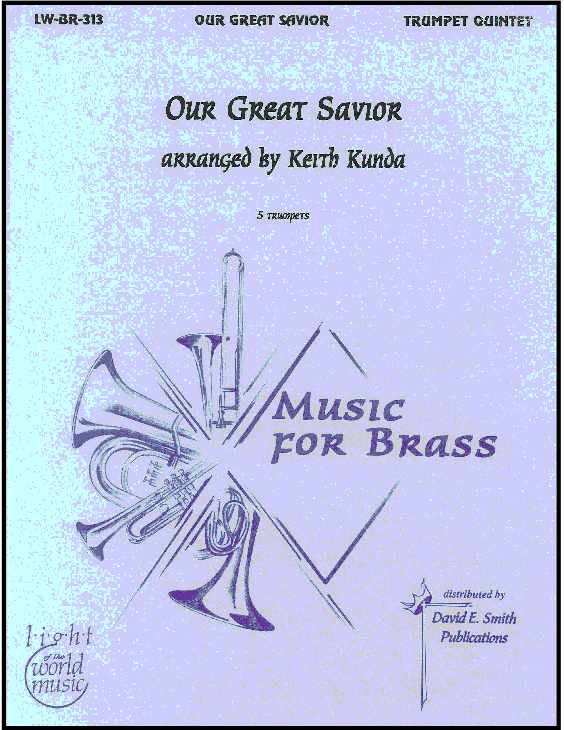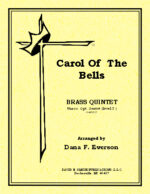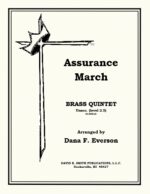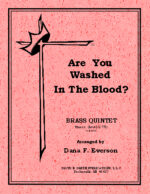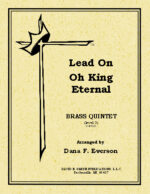| Instrument | |
|---|---|
| Level | 4 |
| Occasion | |
| Tune Name | |
| Theme | Be Thou My Vision |
| Hymn First Line | Be thou my vision, O Lord of my heart |
| Writer | |
| Composer | |
| Publisher | |
| Copyright | 1999 |
| Key | Eb, F |
| Meter | 3-4 |
| Idiom | Brass quintet |
Be Thou My Vision
$16.00
2 tpts, horn, tbn, tuba (tpt sub. for horn)
Related products
-
How Firm A Foundation
$12.00Opening with a fanfare, the first section is in block harmonization with some moving lines. It then moves into melodic statements in the lower instruments with supported obiligatti in the trumpets and horn. The structure again becomes solid in scoring only to return with similar trumpet obbligati. The obbligati is next introduced in the lower voices and then increased rhythmic activity in all voices builds to a solid ending.
-
Carol Of The Bells
$12.00A traditional quintet with optional sixth part baritone, this driving arrangement passes the melodic material constantly around the ensemble. A fun piece to play!
-
Give Me This Mountain
$12.00A standard brass quintet with optional trumpet for horn. As one might expect the piece is cheerful from beginning to end. It opens with rhythmic patterns where the first statement of the tune is presented by the trombone. The chorus is harmonically in block format where it comes to an end. NOW, something different the second trumpet and tuba present a simple accompaniment while all the other voice, yes voices, sing the words and melody of the song! A brief conclusion, a modulations and the piece returns to the texture of the earlier statement. The a bit of tongue and check statements and a very conclusive ending.
-
I Will Sing Of The Mercies
$9.00A woodwind quintet with opt. parts for Alto Sax and Bass Clar. This piece presents itself with a sense of joy throughout with the introduction itself in a motivic manner setting the tone The piece passes through several modulations where the upper voices carry the melodic material while the lower voices support the ensemble with strength. The writing of this arrangement is well crafted to take advantage of the “woodwind quintet sounds.” It continues that way right up to the very end with a declamatory statement of “Mercy.”
-
Assurance March
$9.00A traditional brass quintet with opt. trumpet for horn and extra baritone for use as a sextet. A piece in Alle Breve, is simply stated in block chords with an active bass line. The first strain, is repeated, and follows traditional march scoring. The second section is a bit slower and again in block chord structure, but this time with a first trumpet obbligato. With a regaining of tempo and style the piece becomes stronger until a grandiose ending.
-
-
Lead On O King Eternal
$10.00A traditional brass quintet with opt. trumpet for horn and extra baritone for use as a sextet. The introduction uses extraneous material where it leads in the first theme by the trombone until the theme is passed around in fragments until the them is taken over by the trumpets, and the trombones. A modulation takes place where the theme is in the trombones with flourishes in the trumpets. The trumpets now take the theme with flourishes in the middle voices until the piece ends with a declamatory statement.
-

